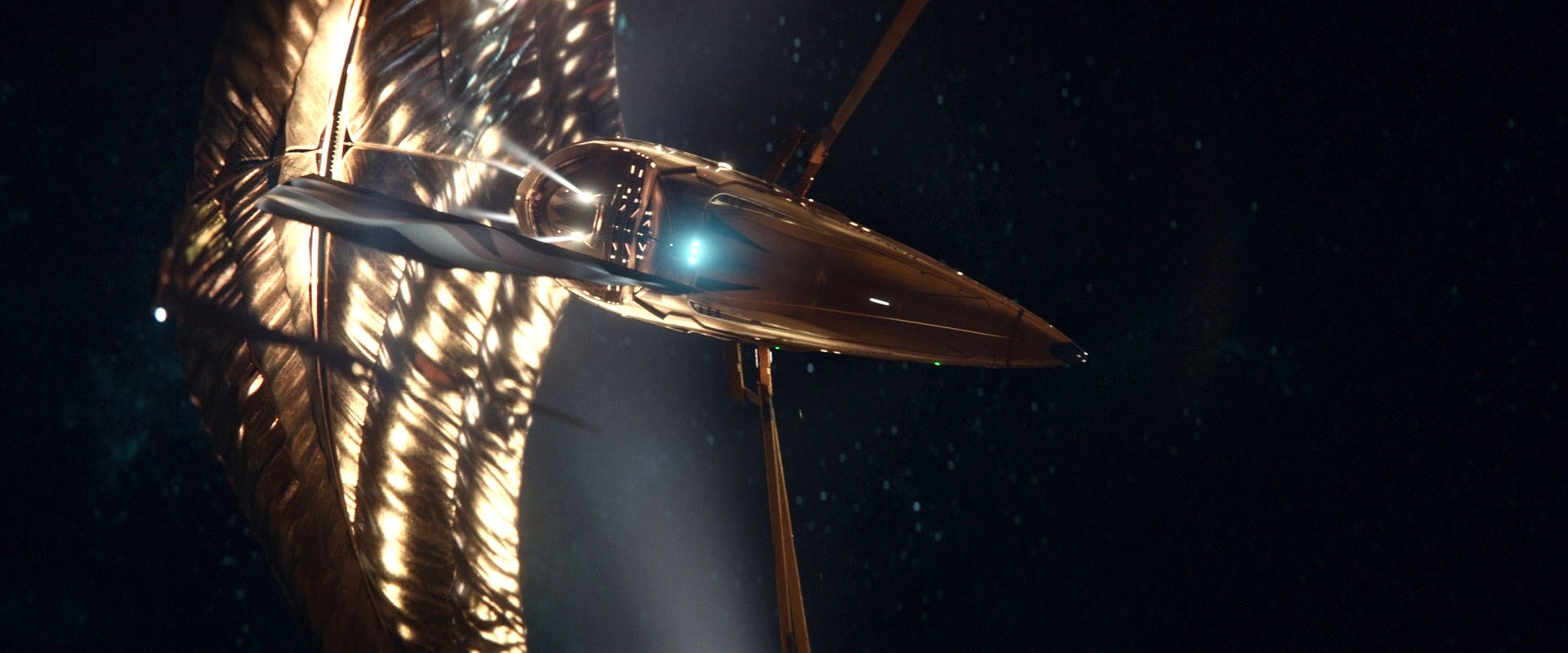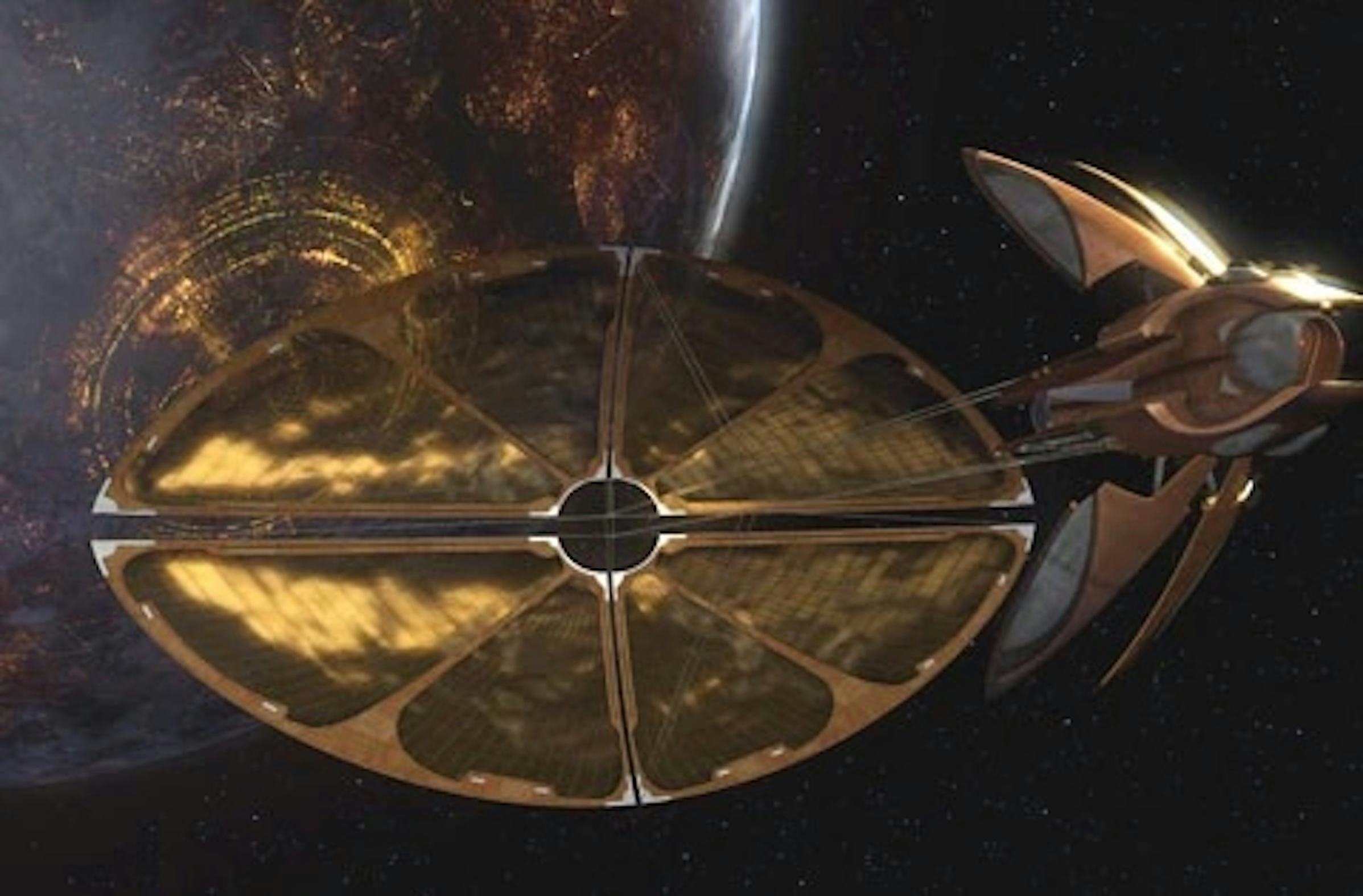
There’s a pervasive idea in science fiction that the stars themselves could power our adventures among the stars. In Star Wars: Attack of the Clones, Count Dooku flies away on a Solar Sailer, while the Star Trek franchise has long suggested that solar sails are the precursor to quicker, more advanced space travel, like warp drive. In a recent episode of Star Trek: Lower Decks, “Shades of Green,” a solar sail race is presented as an archaic way for people to get around the cosmos. Tendi and other Orions are tested by traveling in very old solar sail tech. While faster-than-light travel is a debatable topic in hard science circles, the idea of solar sails is much more concrete.
But, can solar sails in real life do what they do in science fiction? And are solar sails the future of post-orbital spaceflight? Inverse got in touch with NASA’s Les Johnson to get a sense of what’s fact and what’s science fiction when it comes to solar sails.
First off, solar sail technology is very real right now. As Les Johnson tells Inverse, “Under the right circumstances ... solar sails can propel a spacecraft to a higher speed than any other propulsion system packaged into the same volume.”
Johnson is NASA’s principal investigator behind NASA’s “Solar Cruiser” concept, which Johnson points out is viable in the near future. However, those “right circumstances” require a spaceship to already be outside of Earth’s orbit, and somewhere else entirely. As Johnson explains, the right circumstances for solar sail spacecraft to operate today would entail a "large, ultra-thin, and lightweight sail" on a "small, not too heavy spacecraft, [all] operating inside the orbit of Mars.”
Unlike rocket fuel, which is useful for getting outside of Earth’s orbit, a solar sail is a type of propulsion that is efficient once you’re already in space. In this way, a solar sail spacecraft its somewhat analogous to starships in Star Trek; generally speaking the interplanetary kind of ships are built and launched in space. But, Johnson doesn’t think that solar sails will give way to warp drive. Instead, if solar sails kick off the future of space travel, the next generation of that tech will be another kind of sail.

“Yes, in the 24th century, solar sails will likely be considered antiques,” he says, which checks out with most depictions in Trek, including Lower Decks, and the beloved DS9 episode, “Explorers,” in which Captain Sisko builds an ancient Bajoran solar sail ship. This tech has its limitations though, but Johnson says “the decedents of solar sails, laser-driven, light sails, will likely not be obsolete!”
The idea here is that in the future, lasers could stand in for the sunlight used to power solar sails. Johnson explains:
“Solar sails derive thrust by reflecting sunlight ... The light from the sun is fairly constant at any given distance, decreasing as you move farther and farther away. If only we could increase the amount of light reflecting from the sail to increase its performance ... wait. We can! By using high power lasers! Once day, instead of sunlight, fleets of ships will be propelled through space by extremely high energy lasers instead of the Sun.”
Science fiction franchises like Star Trek are unlikely to swap out warp drive for laser sail fleets of starships, but if they ever did, Johnson points out that the biggest problem with solar sails in all of science fiction, is, generally speaking, the solar sails are way too small. Recently 3 Body Problem got this closer to correct in its finale episode, which had a fairly large sail moving a tiny, tiny spacecraft incredible distances through space. And yet, Johnson mentions that the size of sails in sci-fi TV is usually way too small. “Most of these shows don’t show the realistic size sail would have to be in order to carry ships that large.”
In one of his presentations for NASA, Johnson points out that just one portion of a real solar sail is 4,000 square feet, but that when fully deployed, it would be 17,000 square feet. The original USS Enterprise is only about 1,000 feet long, while the larger, Next Generation version, the Enterprise-D is 2,000 feet long. And, in both cases, those ships use propulsion systems (warp drive, impulse engines) which are relatively tiny.

In Lower Decks and other Trek shows (as well as Star Wars) the solar sails on the ships are big, but not big enough. And, Johnson points out, very often these sails aren’t even the right color. He notes that Count Dooku’s solar sailer in Attack of the Clones has a ton of black in it “I can design a solar sail with twice the performance of Count Dooku’s solar sail by changing its color from black to silver, he says. “A black sail absorbs the photon of light, giving it one photon’s worth of acceleration. A reflective sail provides twice as much, two photons’ of acceleration.”
Right now, from Star Trek to Star Wars, the idea of solar sails are coded as ancient, outdated space travel. But, if humanity is really going to have a future among the stars, it might be a good time to stop thinking of solar sails as something from a future sci-fi myth, but instead, as a stepping stone to the future.







